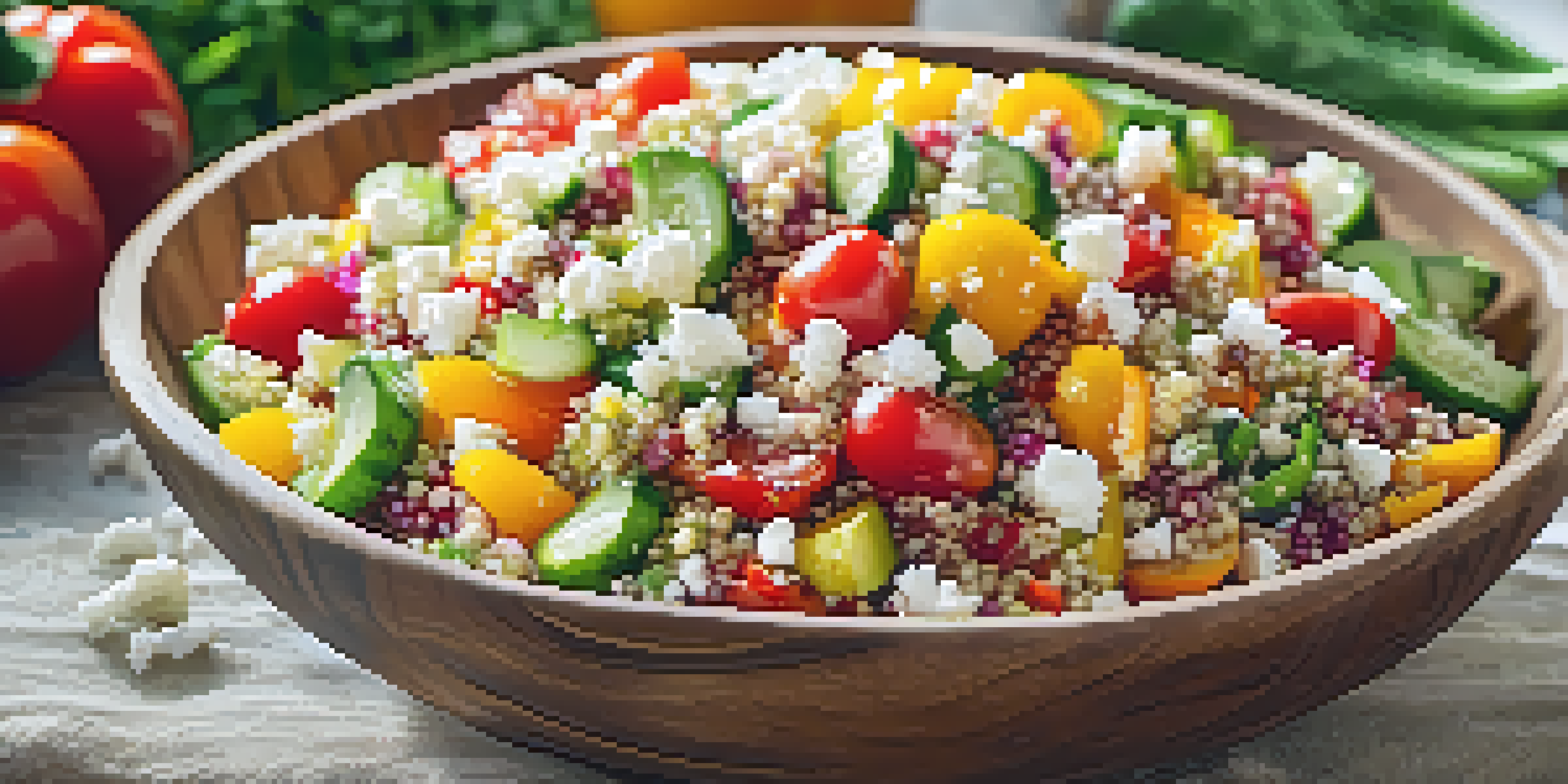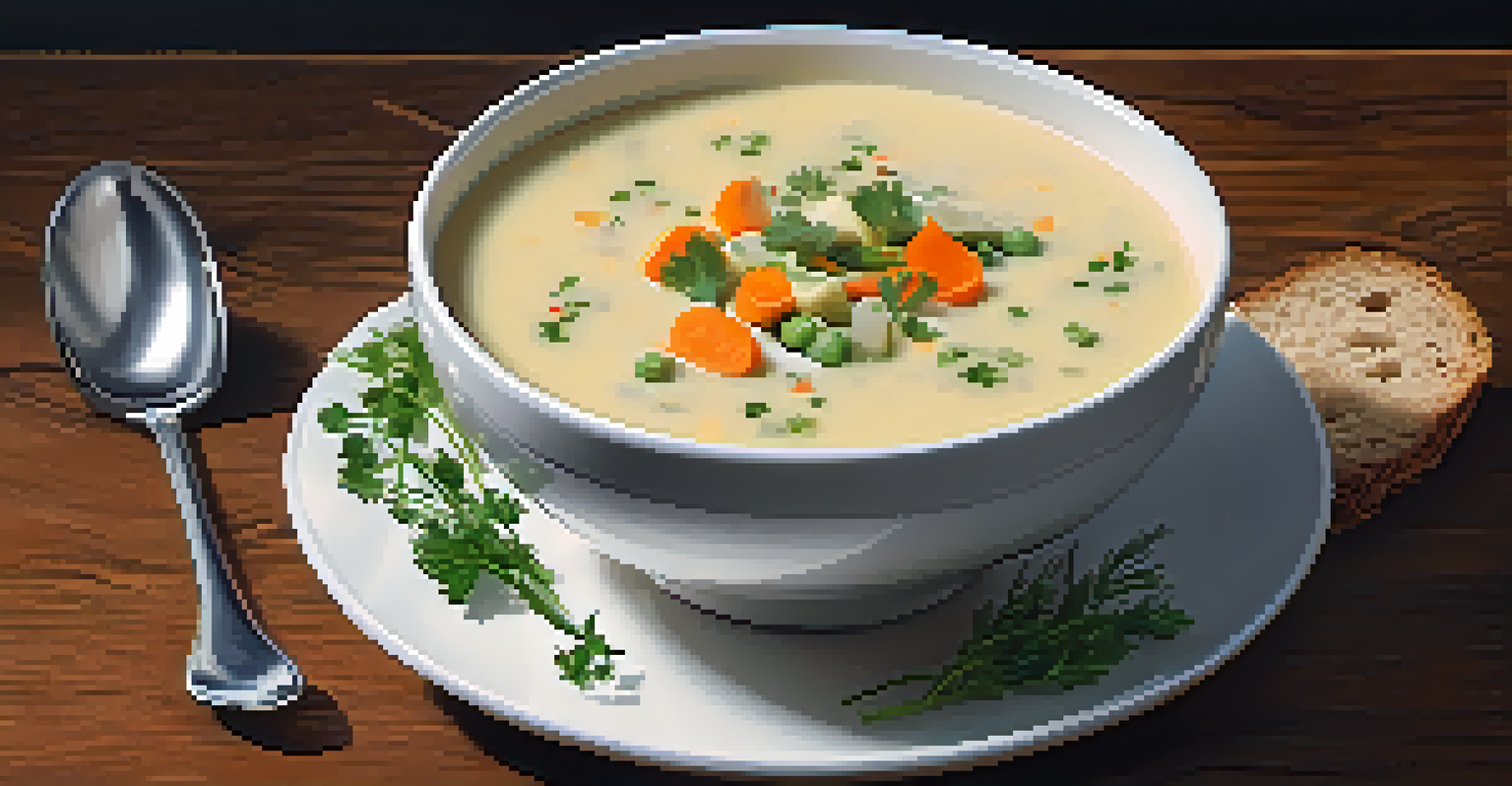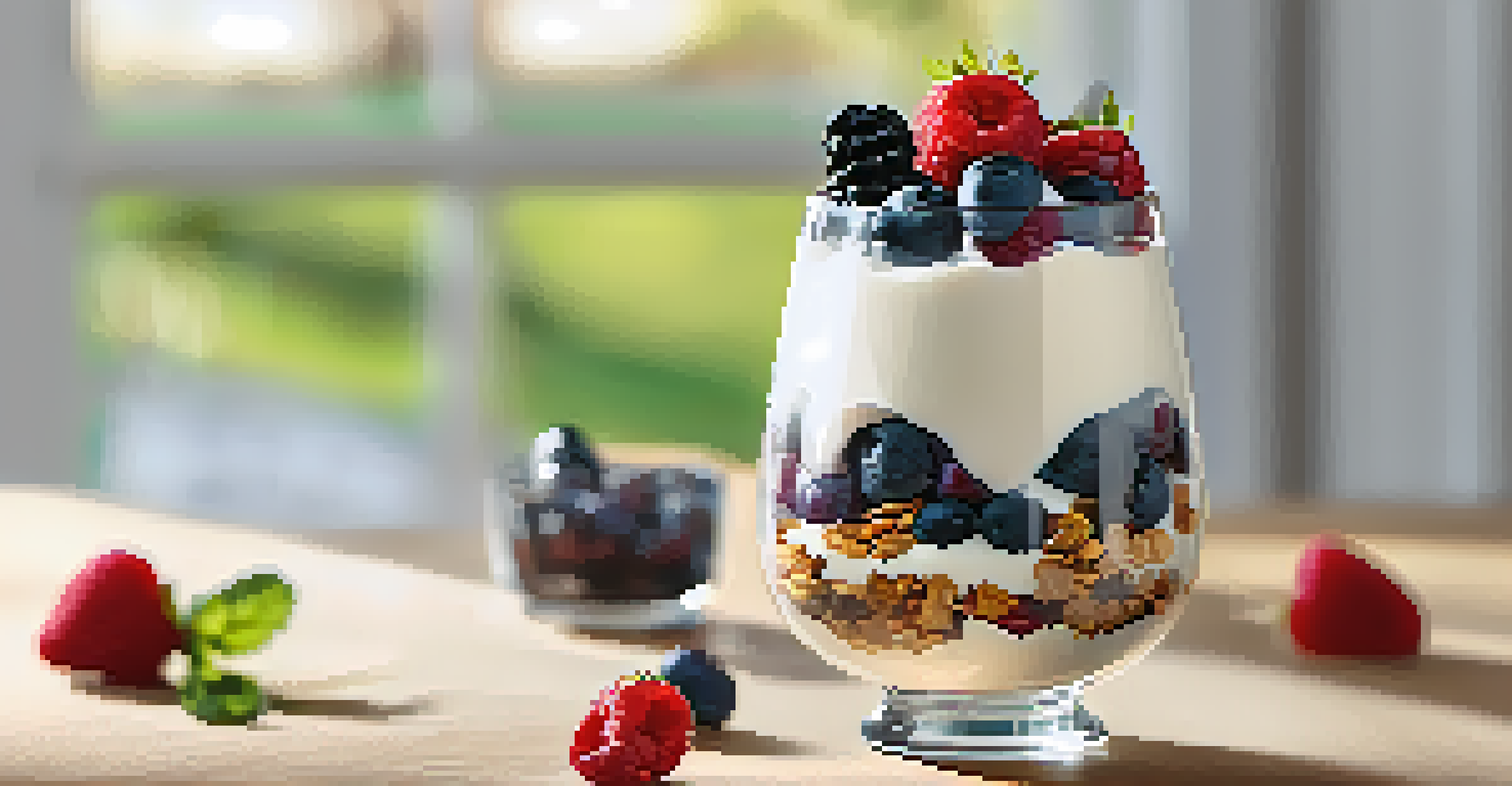Combining Dairy and Vegetables for Nutrient-Rich Meals

The Nutritional Powerhouses: Dairy and Vegetables
Dairy products and vegetables are two of the most nutrient-dense food groups available. Together, they create meals that are not only delicious but also packed with essential vitamins and minerals. For instance, dairy provides calcium and protein, while vegetables offer fiber and a range of antioxidants. This combination can help boost your overall health and well-being.
Let food be thy medicine and medicine be thy food.
Think about your plate for a moment: a creamy spinach dip made with yogurt or a cheesy broccoli casserole. These dishes highlight how easily you can blend dairy with veggies to elevate both nutrition and flavor. By incorporating these foods into your diet, you're ensuring that your meals are well-rounded and satisfying.
Moreover, the synergy between dairy and vegetables can enhance the absorption of certain nutrients. For example, the fat in dairy can help your body absorb fat-soluble vitamins A, D, E, and K found in various vegetables. This means that when you combine these food groups, you're not just making a tasty meal—you're optimizing your nutrient intake.
Creating Balanced Meals with Dairy and Veggies
When crafting meals, balance is key, and combining dairy with vegetables can help achieve that. A simple rule of thumb is to fill half your plate with vegetables, a quarter with a dairy product, and the remaining quarter with whole grains or proteins. This approach ensures that you're getting a variety of nutrients in one meal.

For example, consider a quinoa salad topped with feta cheese and a medley of colorful veggies like bell peppers, cucumbers, and cherry tomatoes. This not only looks appealing but also provides a wide range of nutrients. The combination of grains, dairy, and vegetables makes for a satisfying and nutritious dish.
Nutritional Synergy of Dairy & Veggies
Combining dairy and vegetables enhances nutrient absorption and creates delicious, well-rounded meals.
Additionally, don't shy away from experimenting with flavors. Mixing different types of cheeses with various vegetables can lead to exciting taste combinations that keep your meals interesting. Think of a creamy ricotta spread on whole grain bread topped with roasted zucchini and a sprinkle of balsamic glaze—delicious and nutritious!
Delicious Dairy and Vegetable Recipes to Try
Getting started with combining dairy and vegetables doesn't have to be overwhelming. Simple recipes can make this process enjoyable and easy. For instance, a classic vegetable lasagna layered with ricotta, spinach, and marinara sauce is a perfect way to combine these elements in one wholesome dish.
The food you eat can be either the safest and most powerful form of medicine or the slowest form of poison.
Another delightful option is a creamy vegetable soup made with a base of milk or cream. Adding a variety of vegetables like carrots, potatoes, and peas can create a hearty and fulfilling meal. You can even blend it up for a smooth texture, making it kid-friendly and approachable for all ages.
If you're looking for a quick snack, consider a yogurt parfait with mixed berries and granola. This not only serves as a delicious treat but also packs a nutritional punch, providing you with calcium, vitamins, and fiber. The versatility of these ingredients means there are endless possibilities to explore.
The Health Benefits of Dairy and Vegetable Combinations
Combining dairy and vegetables offers numerous health benefits that can enhance your diet. For starters, dairy is a great source of calcium, essential for strong bones and teeth, while vegetables provide necessary fiber, which aids digestion. This balance can lead to improved gut health and overall wellness.
Moreover, many vegetables are low in calories but high in nutrients, making them an excellent addition to a balanced diet. When paired with dairy, they can help create a feeling of fullness, reducing the temptation to snack on less nutritious options later on. This can be especially beneficial for those looking to maintain or lose weight.
Balancing Meals for Optimal Health
A balanced plate featuring vegetables, dairy, and whole grains ensures a variety of essential nutrients.
Incorporating these foods can also support heart health. Many dairy products are fortified with Vitamin D, which, when combined with potassium-rich vegetables like spinach and broccoli, can help regulate blood pressure levels. Ensuring your meals are both tasty and heart-healthy is easier than you might think.
Understanding Dietary Restrictions and Alternatives
While dairy and vegetables make a great pair, it's important to consider dietary restrictions that some individuals may have. For those who are lactose intolerant or allergic to dairy, there are many alternatives available, such as almond milk, soy yogurt, or cashew cheese. These options can still provide a similar creamy texture and flavor profile.
Additionally, if you follow a vegan diet, there are numerous plant-based dairy alternatives that can be used in combination with vegetables. Nutritional yeast, for example, offers a cheesy flavor without the dairy and can be sprinkled over roasted vegetables or mixed into pasta dishes.
Being mindful of dietary needs doesn’t mean compromising on taste or nutrition. With a little creativity, you can create satisfying meals that cater to everyone's preferences while still offering the benefits of combining dairy and vegetables.
Tips for Incorporating Dairy and Veggies in Daily Meals
Incorporating dairy and vegetables into your daily meals can be as simple as planning ahead. Start by stocking your fridge with a variety of fresh vegetables and dairy products, like cheese, yogurt, and milk. Having these ingredients on hand makes it easier to add them to your dishes without much thought.
Consider adding dairy to your breakfast by mixing yogurt with fruits or including cheese in your morning omelet. For lunch, toss a handful of spinach into your sandwich or wrap, or enjoy a salad topped with your favorite cheese. Dinner is a great opportunity to prepare a vegetable-heavy casserole or stir-fry with a creamy sauce.
Sustainable Food Choices Matter
Choosing local dairy and seasonal vegetables supports health, sustainability, and local economies.
Lastly, don't forget to get the kids involved! Encourage them to help create meals that combine these ingredients, making it a fun and educational experience. When they participate in the cooking process, they're more likely to enjoy the final product and develop healthy eating habits for the future.
Sustainability in Dairy and Vegetable Choices
As we think about our meals, sustainability is a crucial consideration. Choosing locally sourced dairy and seasonal vegetables not only boosts flavor but also supports local farmers and reduces our carbon footprint. This approach can lead to fresher, more nutritious meals that are better for the environment.
Additionally, being mindful of how we consume these products can play a role in sustainability. For instance, opting for organic or grass-fed dairy products can contribute to more ethical farming practices and better animal welfare. Similarly, selecting fresh, seasonal vegetables can minimize the environmental impact of transportation and storage.

Ultimately, combining dairy and vegetables can be part of a sustainable lifestyle. By making informed choices about where our food comes from, we can enjoy delicious meals while also caring for our planet and supporting local communities. It's a win-win for our health and the environment!